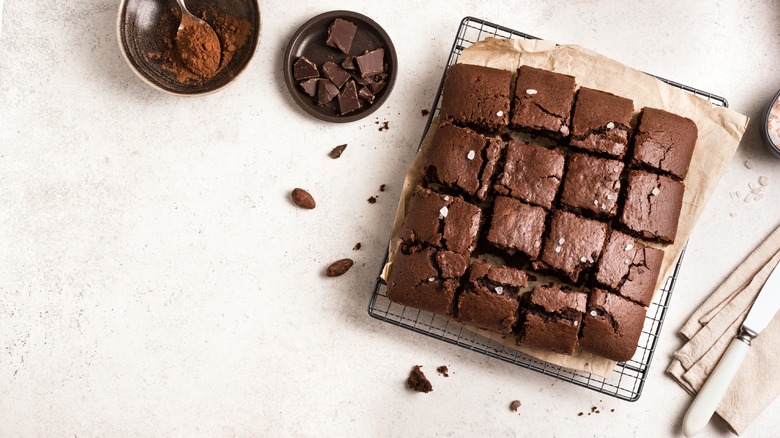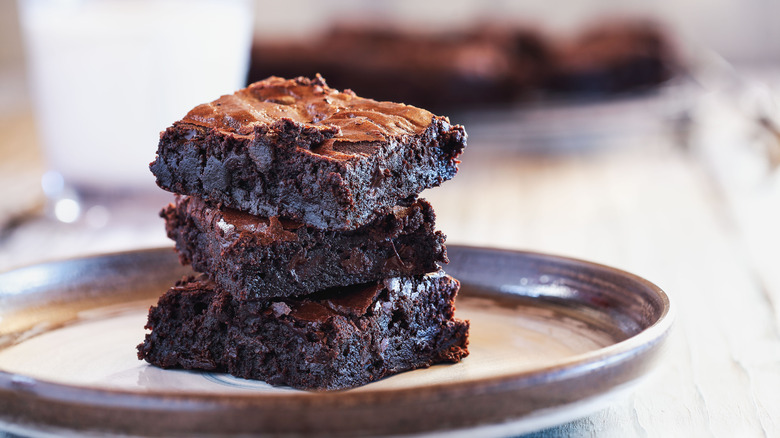The Pro Tip For Achieving The Chewiest Brownies
Perhaps the most obvious distinguishing characteristic between chocolate cake and brownies is the difference in texture. While cake tends to be fluffy and light, brownies are beloved for their dense, chewy, fudgy consistency. Achieving this decadent texture depends upon the method you use to mix the ingredients. Dessert recipes require precise measurements and a strict order to how ingredients are added and combined to create batter. With brownies, this order is key to the chewiest, fudgiest texture.
The method used to blend all the ingredients is known as the wet and dry method. As its name implies, the wet and dry method blends all wet ingredients first, then mixes in all the dry ingredients. In the case of brownies, this means blending sugar into melted butter with cocoa powder and eggs until it's a thick wet batter, then stirring in the flour. This technique is in stark contrast to cake batters or cookie dough that require you to cream sugar and butter together, then add eggs, liquid seasonings, and dry ingredients. Creaming incorporates air bubbles into the batter, which makes cakes light and fluffy. Since you don't want fluffy, light, cakey brownies, dissolving sugar directly into melted butter doesn't aerate the batter. This will ensure that the brownies stay dense and chewy. Furthermore, as the brownies bake, the sugar will rise to the surface, caramelizing to create that crackly, shiny top.
More tips for perfect brownies
Not only does the wet and dry method result in fudgy, dense brownies, but you also don't have to worry about over-mixing the batter. Overmixing creamed, aerated cake batters will make for tough, dense cakes, but it won't negatively affect your brownie's consistency. Hot butter is key to dissolving the sugar and blooming the cocoa powder for a chocolate-forward brownie. Since the batter is as thick and gooey as the final product, it's wise to line your baking pan with parchment paper for easy removal. You'll want to cool the brownies for about 15 minutes before removing them from the pan and slicing them into squares. While the toothpick test applies to brownies, you don't want the toothpick to come out clean like it does with cakes. Instead, you'll look for a few crumbs attached to the toothpick. If you see raw, liquid batter on the toothpick, then it's not finished baking.
If you want to enhance the chocolate flavor further, you can use dark cocoa powder with a higher percentage of cocoa. Espresso powder is another secret ingredient that'll accentuate the cocoa powder's bitter finish and add its own depth without overpowering the chocolate flavor. Vanilla is always a welcomed ingredient that will add richness to the flavor profile of your brownie recipe. You could also sprinkle coarse sea salt over the brownies to balance the sweetness and bring out the chocolate flavor.

